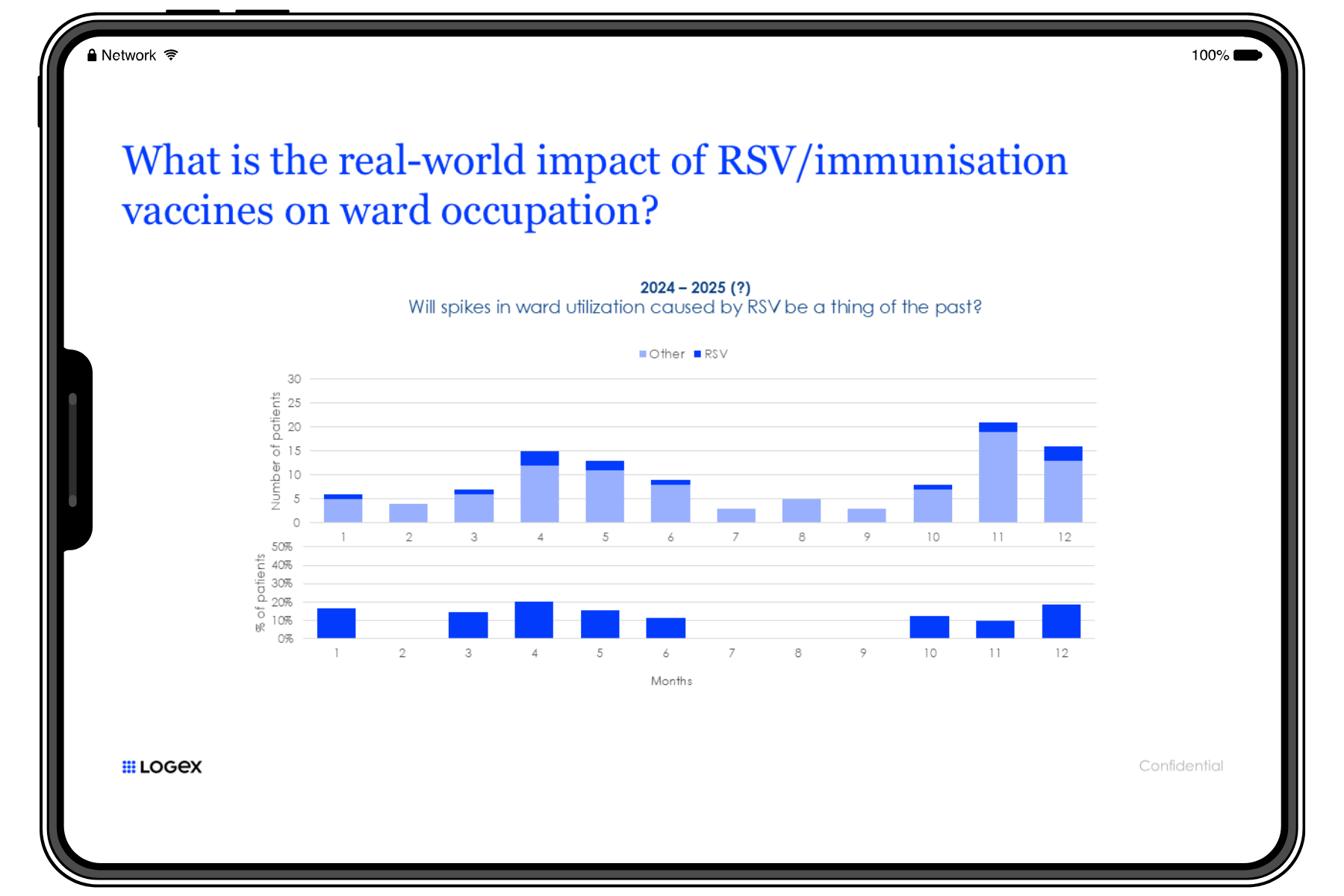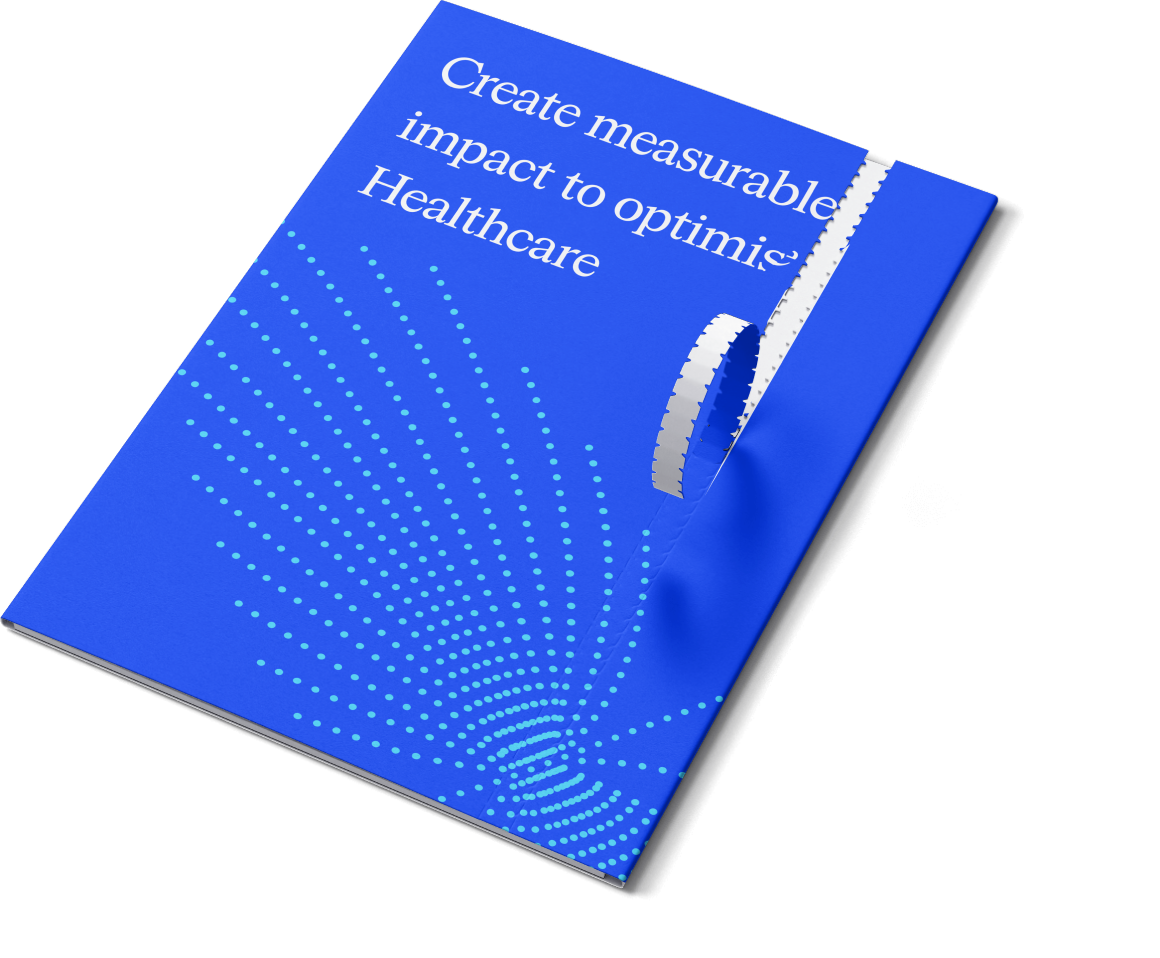- Solutions
- Real World Evidence
- Respiratory Tract Infectious Disease Observatory
Join Our Respiratory Tract Infection (RTI) Observatory
We use real-world data from participating hospitals to analyse diagnostic patterns, patient care pathways, and the impact of respiratory infections on healthcare resource utilisation. Our insights help assess the effect of vaccination and immunisation strategies and support hospitals in planning and preparedness.

Gain unique Pan-European insights
Support smarter hospital planning and resource allocation
Seasonal respiratory infections such as RSV, SARS-CoV2, and influenza can lead to sudden surges in admissions, placing strain on hospital capacity and disrupting routine care. Insights from the RTI Observatory help hospitals anticipate and prepare for these peaks by identifying trends in patient presentation, care pathways, and healthcare resource use. By distinguishing between different pathogens, the data can also help explore the value of more consistent testing—supporting both patient placement decisions and future cost-effectiveness evaluations. Participating hospitals gain benchmarking insights that enable smarter staffing, better bed occupation management, and more resilient planning—especially for vulnerable populations like young children and older adults.
Generate real-world insights to evaluate vaccination and immunisation strategies
The RTI Observatory delivers robust, real-world insights into the effects of vaccination and immunisation strategies for respiratory tract infections. By linking hospital data across countries, it helps evaluate how interventions—such as maternal vaccination or infant immunisation—relate to hospital admissions, patient characteristics, and healthcare resource use. These insights support the ongoing assessment of current strategies and contribute to more informed planning and decision-making.

Participate for free and help advance respiratory healthcare
Hospitals can join the RTI Observatory at no cost and benefit directly from data-driven insights into respiratory infections and their impact. Participation is simple and designed to integrate seamlessly into existing data flows. In addition to supporting local planning and care optimisation, every participating hospital helps grow collective knowledge, close important gaps in real-world data, and contribute to improving the quality and delivery of healthcare across the system.

What makes our Observatory approach unique?

Data granularity
The level of detail LOGEX has access to is unique, allowing exceptional visibility into patient pathways. E.g.:
- Patient pathway mapping
- Lines of treatment
- Combinations of drugs and indication split
- Filter on specific patient groups

Data access & recency

Longitudinal insights

Scalability
The observatory setup allows for quick expansion into related disease areas under the same contracts.
With our extensive network of hospitals across Europe, expanding into other countries is highly feasible.

Experience
LOGEX has over 10 years of experience working with 700+ healthcare providers across the EU.
We are experts in extracting, delivering, validating and analysing healthcare datasets in close collaboration with HCPs.

Security by design
NEN7510 and ISO27001 certified, full compliance with GDPR.
FG and security officers, authorisation levels, two-factor authentication, informed / explicit consent.
Frequently Asked Questions
What types of respiratory tract infections are monitored by the Observatory?
The Observatory monitors a wide range of respiratory tract infections (RTIs), with a particular emphasis on viral infections. Since the onset of the COVID-19 pandemic, the most prevalent viral infections being tracked include influenza, SARS-CoV-2, and respiratory syncytial virus (RSV). These three pathogens are specifically included in the current pathogen test panels used by the Observatory.
However, the scope of the Observatory is not limited to these viruses alone. It captures data on all RTI hospitalisations, regardless of the cause. The identification of specific pathogens within these infections depends on the microbiology tests that are performed. This comprehensive approach ensures that the Observatory can provide valuable insights into the prevalence and impact of various respiratory infections, aiding in public health monitoring and response efforts.
What methods are used to collect and report data on respiratory tract infections?
Data on respiratory tract infections is collected and reported using a comprehensive approach that involves multiple centers across various countries. This multi-center, multi-country methodology ensures a diverse and robust dataset. The data collection is both retrospective and longitudinal, spanning multiple years and seasons, which allows for the identification of trends and patterns over time.
The observational nature of the projects means that real-world data is gathered from routine care settings, reflecting everyday clinical practices. This approach captures a wide range of demographics, including adult and pediatric patients, ensuring that the data is representative of the entire population.
Hospital administrative data and microbiology data are linked and analysed to provide a detailed picture of respiratory tract infections. This linkage allows for the integration of clinical information with laboratory results, enhancing the accuracy and depth of the analysis.
Overall, this comprehensive framework enables the collection and reporting of high-quality data on respiratory tract infections, providing valuable insights into their prevalence, trends, and impact across different populations and regions.
How can I participate with the RTI Observatory or access the data collected by the Observatory?
To participate in the RTI Observatory or access the data collected, there are several options available:
- Healthcare Providers: If you are a healthcare provider interested in gaining insights into hospitalised respiratory tract infections (RTIs) within your hospital, you can join the Observatory for free. This will allow you to access valuable data and trends specific to your institution.
- Researchers: Researchers who are interested in studying RTIs can request information from the Observatory. This access will provide you with comprehensive data to support your research and help you gain deeper insights into the prevalence and impact of RTIs.
- Life Science Companies: Life Science companies looking for detailed information on RTIs can also request data from the Observatory. This information can be crucial for developing new treatments, vaccines, and other healthcare solutions.
By participating in the RTI Observatory, you can contribute to and benefit from a rich repository of real-world data, enhancing your understanding and ability to address respiratory tract infections effectively.
How is hospital data handled and are there any restrictions on sharing it?
Hospitals remain the owners of their data at all times. Only anonymous population data may be shared with third parties, and LOGEX strictly follows local regulations regarding cross-border data transfers.
Get more out of our Healthcare Intelligence
Go beyond Real-World Data with Patient Engagement and Financial Analytics.

Patient Engagement
Optimise digital patient engagement activities while collecting valuable data.

Financial Analytics
Controlling costs and optimising operations through data-driven decision-making.
Secure, compliant and trusted.
Healthcare organisations worldwide trust LOGEX.
Providing insights into the effectiveness of care for breast cancer patients with real-world data
Actionable insights into innovative medicines and their costs
Report: "On the Horizon".
March 2024 edition.

Learn how to leverage data
to make better decisions.
Read our latest publications about how we support data-driven decision-making.

Why Real-World Data Matters in Understanding the Complexity of Immune Mediated Inflammatory Diseases

AstraZeneca: Leveraging Real-World Data to Close Evidence Gaps in Clinical Practice
-1.jpg?width=1732&height=1155&name=Stocksy_txp3c7f9c9dMmT300_Medium_2944384-edit%20(1)-1.jpg)
How can RWE be used to solve unwarranted variation in drug uptake and clinical guidelines?
Get clarity and control to make better decisions.
Do you have any questions about harnessing data-driven insights for better decision-making? Allow our experts, such as Sarah, to lead the way.
We will reply within two business days.



